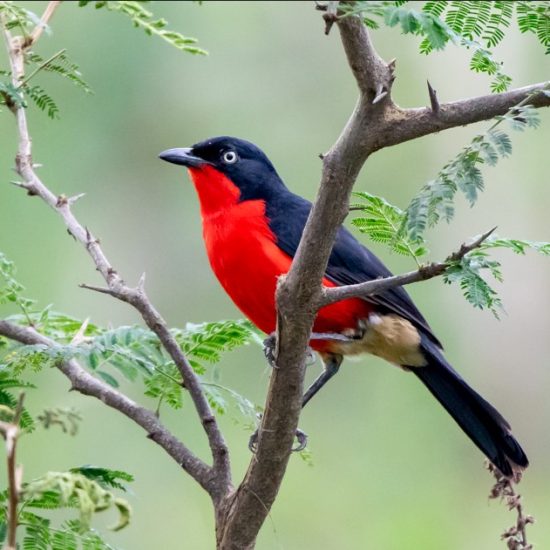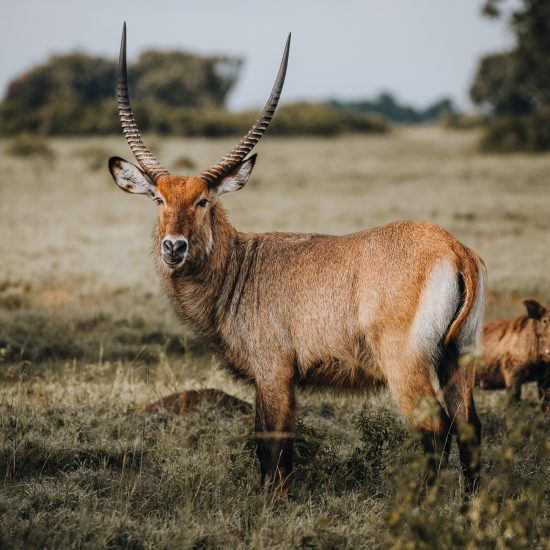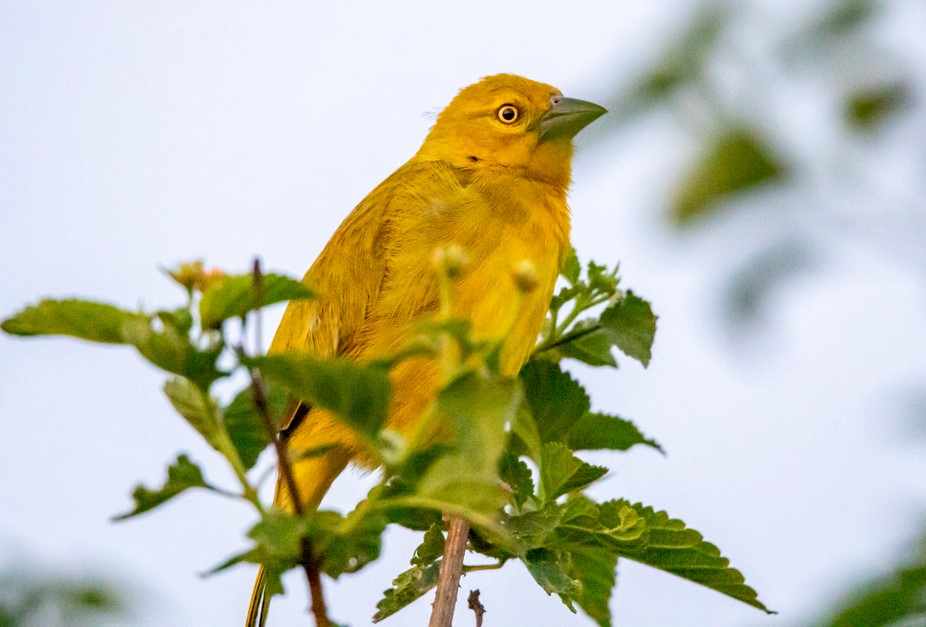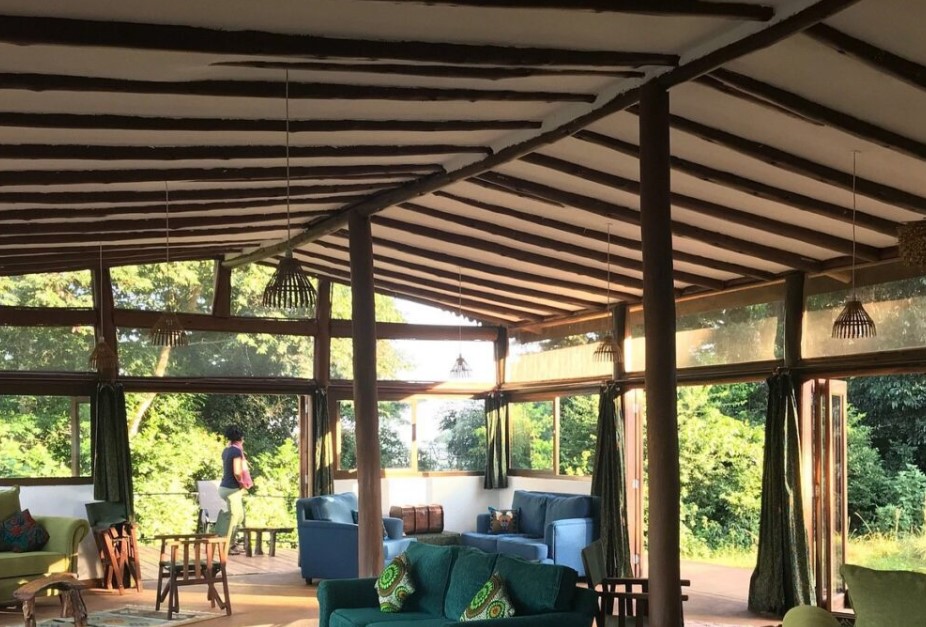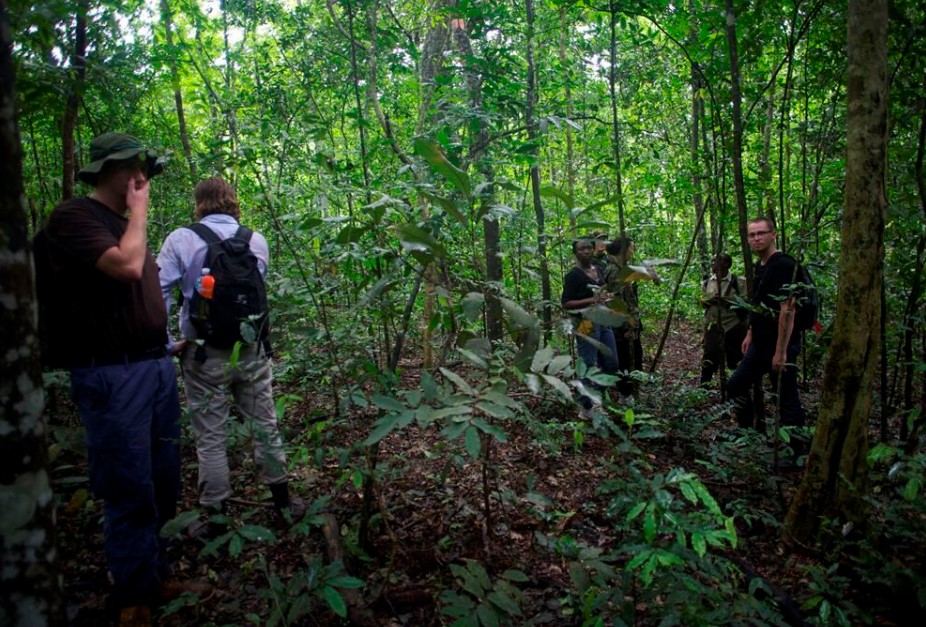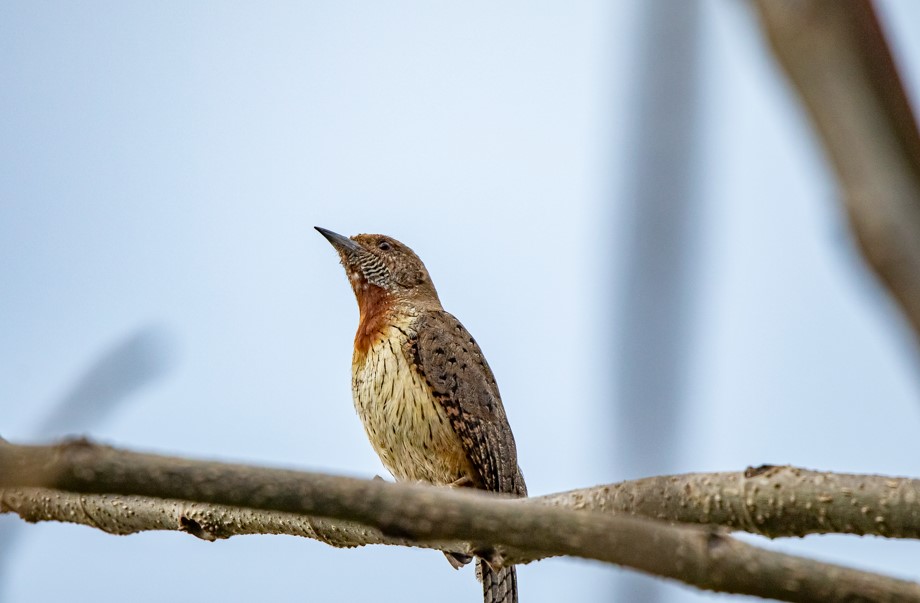
Birdwatching in Mgahinga National Park
Birdwatching in Mgahinga National Park, the park boasts a rich biodiversity with a variety of ecosystems, including lowlands, bamboo forests, marshes, and montane forests for Albertine Rift endemics. Numerous bird species, including migratory birds and Albertine Rift endemics like the Regal Sunbird, Rwenzori Turaco, Blue-headed Sunbird, Rwenzori Batis, Scarlet-tufted Malachite Sunbird, African Hill Babbler, and the White-necked Raven among others, can be found in the diverse habitats of Mgahinga National Park.
Mgahinga National Park is located in the Kisoro district of southwest Uganda and covers 33.9 sq km. It is known for its rich biodiversity, especially the mountain gorillas, which are found in only two parks: Mgahinga National Park and Bwindi Impenetrable National Park. The park became a game reserve in 1930 and was declared a national park in 1991 to protect the endangered gorillas.
The park has over 250 different types of bird species, where 17 are endemic to the Albertine Rift and several other forest dwellers. For those who are relatively athletic, the guided Sabyinyo Gorge Trail provides an excellent chance to see a variety of unique birds, including the Strange Weaver, Regal sunbird, Archer’s Robin-chat, Kivu ground thrush, Ruwenzori turaco, and others. There are shorter bird hikes, but they are less fruitful. Keep an eye out for the magnificent scarlet-tufted malachite sunbird when hiking in the mountains. Between November and April, migratory birds are always present between November and April.
Mgahinga National Park has beautiful spots for nature walks, including forests, lakes, and mountain slopes. One trail leads to village plantations, allowing visitors to interact with local people like the Batwa. The border trail on Mt. Sabyinyo takes about 5 hours and leads to where Uganda, Rwanda, and DR Congo meet, showcasing different vegetation and wildlife, including golden monkeys. The top of Gisozi hill provides stunning views of the park and surrounding mountains. Some trails can be challenging, such as the Sabyinyo Gorge walk, which requires good fitness and takes visitors through steep areas with varied flora and fauna. While walking, pay attention to the sounds of birds and monkeys, and watch for large animals like antelopes and elephants.
Bird species to see in Mgahinga National Park.
Birdwatching in Mgahinga National Park, over 184 species of birds can be spotted in the Park’s natural habitats including lowlands, marshes, caves, forests, lakes, and mountains. Several species to look out for include the Banded Prina, Regal Sunbird, Cape Robin-chat, Yellow-Vented Bulbul, Blue-headed Sunbird, Yellow-throated Long Claw, Rwenzori Turaco, White-starred Robin, Rwenzori Batis, White-necked Raven, White-naped Raven, Red-faced Woodland Warbler, White Starred Robin, Western Green Tinkerbird, Wax Bills, Thrush, and Cinnamon Bracken Warbler, Striped breasted Tit, Mountain masked Apalis, Streaky Seedeater, Stray seedeater, Stone Chat, Speckled Mousebird, Southern Red Bishop, Shelly’s Dusky Crimsonwing, among others.
Other birds include the Rwenzori Nightjar, Rwenzori double-collared sunbird, Olive Pigeon, Rufous -chested swallow, Regal Sunbird, Red-throated Alethe, Red-necked Spur Fowl, Pin-tailed whydah, Paradise Flycatcher, Olive woodpecker, Olive Thrush, Montane Nightjar, Malachite Sunbird, Scarlet-tufted Sunbirds, Kivu-ground Thrush, Alpine chat, Ibis, Handsome Francolin, Bronze Sunbird, Grauer’s Swamp Warbler, Grey Capped Warbler, Greater Double collard Sunbird, Fly Eagle, Crowned Crane, Firefinch, Fire Finch Stonechat, Dusky Turtle Dove, Double-collared sunbird, Doherty’s Bush-shrike, Crowned Hornbill, Collared Apalis, Chubb’s Cisticola, Cape Robin-chat, Brown-crowned Tchagra, Brown Woodland Warbler, Blue-headed Sunbird, Blue-headed Coucal, Black-headed Waxbill, Black Kite, Archer’s Ground Robin, Dusky Crimson wing, and Archer’s Robin-Chat.
Other Attractions in Mgahinga National Park
Mountain Gorillas
Mgahinga National Park is home to the only mountain gorilla family called Nyakagezi, making it the park with the fewest mountain gorillas in the world. These gorillas live in the Albertine Rift Afromontane forests on the Virunga hills. The park’s lush vegetation attracts many visitors. Mountain gorillas are endangered and can only be found in four parks including Mgahinga Gorilla Park and Bwindi Impenetrable National Park (Uganda), Volcanoes National Park (Rwanda), and Virunga National Park (Democratic Republic of Congo).
Golden Monkeys- Birdwatching in Mgahinga National Park
Uganda is home to unique primate species, including the golden monkey, found in Mgahinga National Park. These monkeys have golden-orange backs and live in bamboo forests on the Virunga volcanoes. One alpha male can lead a group of up to thirty monkeys. They mainly eat bamboo, fruits, and leaves, and sometimes insects. While some golden monkeys are accustomed to humans, others are still accustomed and can be part of habituation events.
Virunga Volcanoes
The 8 magnificent volcanoes that make up the Virunga Mountains (Virunga Massif) are situated along the Albertine Rift Valley in East Africa, in Rwanda, Uganda, and the Democratic Republic of the Congo. The catchment regions of these Virunga mountains are home to a variety of wildlife species, including endangered mountain gorillas, golden monkeys, forest hogs, forest elephants, and several bird species. 3 of the 8 Virunga volcanoes are found in Mgahinga Gorilla National Park; Virunga National Park and Rwanda’s Volcanoes National Park share one of these. Mount Sabyinyo, Mount Muhabura, and Mount Gahinga are the 3 hiking-friendly mountains in Mgahinga National Park.
The best time to visit Mgahinga Gorilla Park
Mgahinga National Park can be visited all year round but the best time to visit Mgahinga is during the dry season from June to August and December to February. These months offer drier trails which enhance trekking and hiking experiences. Additionally, this makes activities like gorilla trekking and golden monkey trekking more comfortable and accessible due to less rainfall.
However, the park can also be visited during the wet season which is favorable for birdwatching during the months of April to May and October to November, since they receive plenty of rainfall which supports emerald vegetation and also attracts migratory birds. More still, the majority of birds nest between November and April, and migratory birds are present at this time. However, due to heavy rains, some trails get muddy, slick, and slippery, making them inaccessible.



